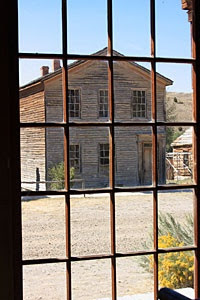One of the decisions that the photographer needs to make is where to stand and which way to point the camera. Some guides that are used in helping the photographer determine this are as follows.
*Rule of Thirds
*Using Diagonals
*Circles
*Frames Within Frames
*Influencing a Composition
*Rule of Thirds:
A simple device for getting the balance of a composition right is to use the rule of thirds. This breaks the frame up into a grid of 9 equal rectangles. Key points of the shot are placed at one or more of the intersections, while key horizontal or vertical lines relate to the grid lines.
*Using Diagonals:
Diagonal lines generally work well to draw the eye of an image's viewer through the photograph. They create points of interest as they intersect with other lines and often give images depth by suggesting perspective. They can also add a sense of action to an image and add a dynamic look and feel.
 |
| Taken by Basic and Beyond Photography |
*Circles:
Triangles and diagonal lines are known for their ability to create drama and tension within the frame. Circles and curved lines tend to do the opposite, often creating harmony within a picture. If you incorporate a dominant round shape within a photo, you will find not only that it attracts immediate attention but also that it is hard for the eye to draw away from it.
 |
| Taken by Basic and Beyond Photography |
*Frames Within Frames:
The most popular way of achieving this is to use a natural frame that is present in the scene, and shoot through this. Archways, columns, trees, door frames, and window frames are commonly used in this way, providing an artistic means of limiting the useful image area of the shot. Once you have started looking, you will find that these natural frames occur everywhere.
Frames within frames also serve other purposes. For instance, the technique can be a way of hiding distracting details in the foreground. It is also a way to help create a feeling of depth in photos, because frames add another layer to the image.
 | |||
| From scrapjazz.com |
*Influencing Composition:
Great photos are often made rather than found. Instead of photographing a scene as it is, the photographer usually moves around to find the best angle, often encouraging subjects to move to a good composition. Inanimate objects can be moved or moved around until the desired composition is reached. Just remember to be flexible. As you arrange your shots you may need to adapt to your subject and/or your surroundings. Incorporating props and taking suggestions and ideas from your subject/s.
 | |
| Taken by Basic and Beyond Photography |
Assignment:
Choose one of the 5 composition guides, using its description capture a photo that represents it best.
Please label the photo with the guide that you have chosen to use.
Assignment due Sun Oct. 17 6pm central.
Til next time happy shooting.







No comments:
Post a Comment